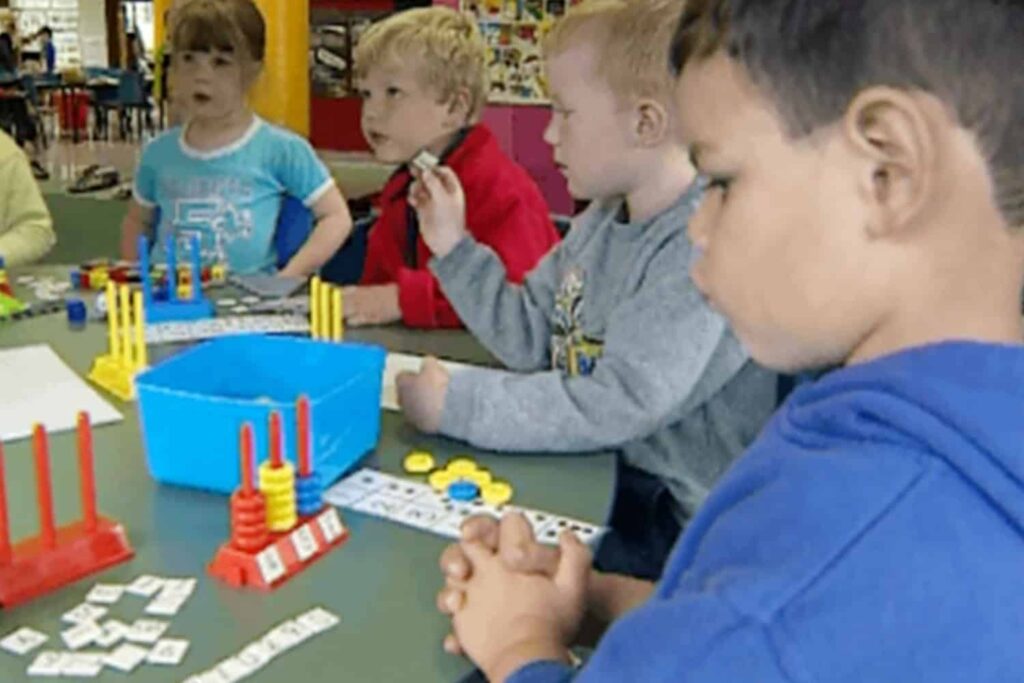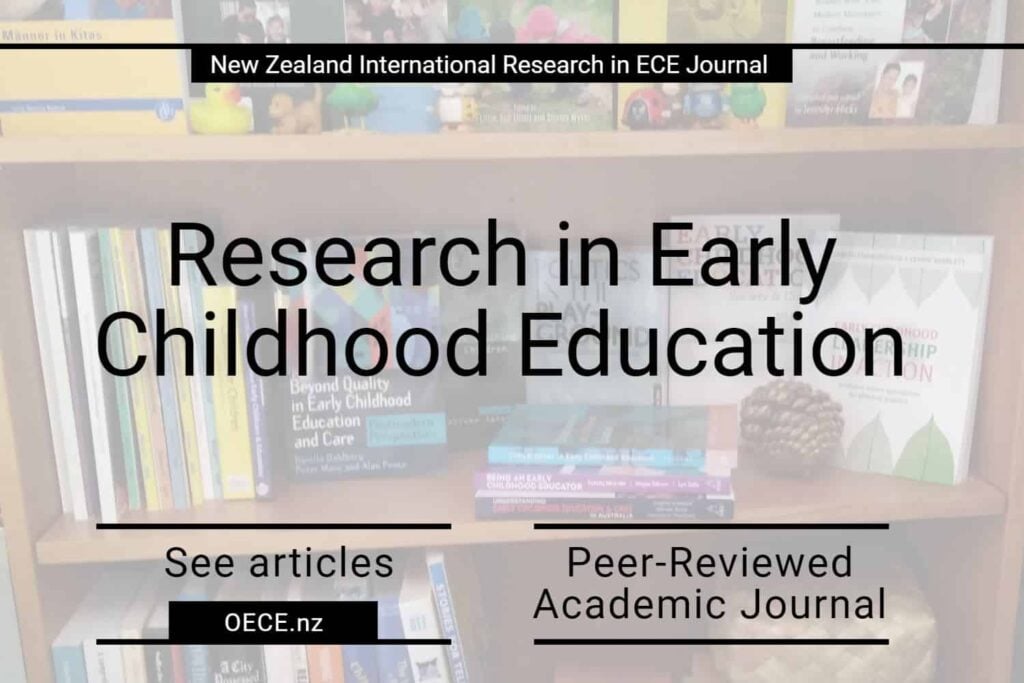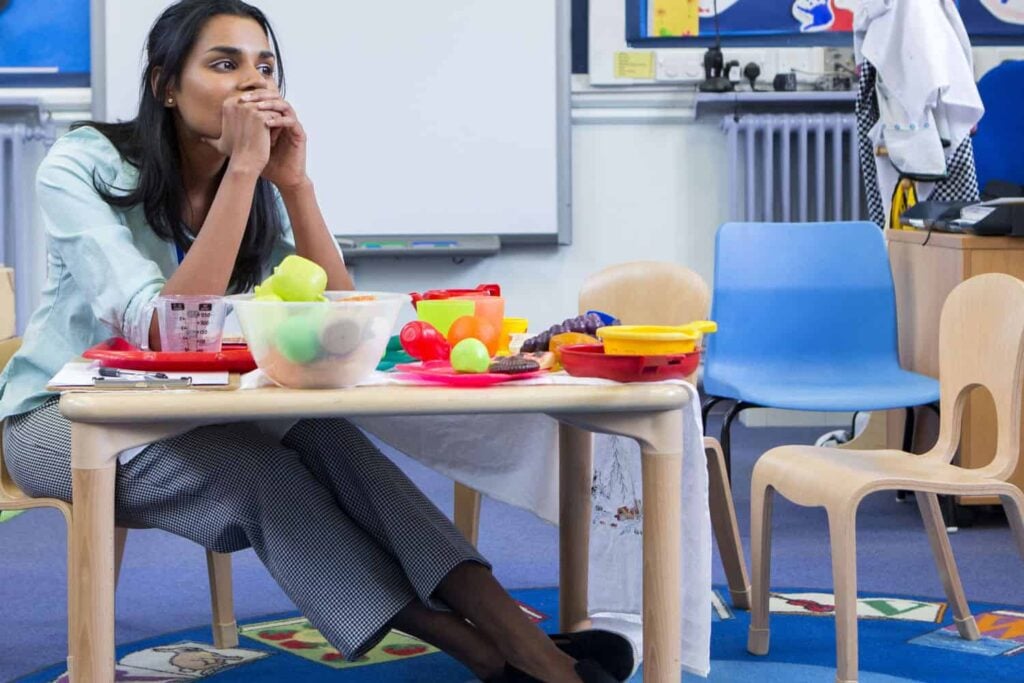Structural indicators of quality.
By Dr Sarah Alexander.
Research on quality from a developmental psychology perspective has focused on the structural features of the early childhood setting. These are features which government regulation can set standards for and which government policy can have a significant influence over.
The structural features consistently found by international research over several decades to be essential for ensuring positive outcomes for children in ECE are:
- adult-child ratio
- group size (also known as class size)
- staff trained in early childhood care and education
- staff stability (teacher turnover)
- the amount of space per child
The first three (ratios, class size, ECE trained staff) form the “iron-triangle of quality.” These three particular empirical indicators of quality interact and combine together to affect psycho-social and cognitive development, and not one of these indicators should be regulated without consideration of how it interacts with the other two.
ADULT-CHILD RATIO
There are many people who argue for better adult:child ratios in ECE.
The minimum requirements do certainly need to be lifted.
But if the adults lack good supervision skills or if they are present (e.g. sitting on a seat staring at the children) but not actively participating in teaching and caring for the children then more adults for the number of children will not be better for children. If the adults are doing cleaning tasks, admin tasks, are standing or sitting around talking together, are on their phones, or otherwise engaged then a higher number of adults to children will not make a difference to outcomes for children and it could even end up being worse for children e.g. if the adult who was hands-on with supervision then spends much of her/his time chatting with a new colleague instead.
Current Regulation and Practice on this structural indicator:
NZ regulations specify no more than 4 children under the age of 6 years to 1 adult in home-based licensed ECE. Why? The reason is more of a practical nature than based on empirical research. Educators are solely responsible for children when in their care. Should for example, an accident occur and a child has to be rushed to the doctors or hospital then there would be no one left at home who is responsible for children and four children is the maximum for the average family car.
In centres operating for more than four hours a day the current minimum legal adult:child ratio is 1 adult to up to every 5 infants; 1 adult for the first 6 children aged 2 years and older, 2 adults for up to the first 20 children if more than 6 children aged 2 years and older, and further adults for every additional 10 children (e.g. 3 adults for up to 30 children, 4 adults for 40 children … 15 adults for up to a licensing maximum of 150 children).
In Playcentres, NZ regulations specify no more than 5 children to each adult. Children aged under 2.5 years must have a parent or familiar caregiver attend with them, who can be one of the ‘duty team’ for ratio purposes.
What to Look For:
- In a home-based ECE setting 1 adult to a maximum of 4 children – preferably no more than 3 children under 6 years and no school-aged children under 14 years.
- In a centre a ratio of 1 adult to no more than 3 children aged under 2 years, 1 adult to no more than 6 two-year-olds, and 1 adult to no more than 8 children over 3 years. Note that young children are developing their physical skills and still need a lot of one-on-one support e.g. for learning to climb. They also have greater dependence on adult support for personal needs compared with older children).
- While all adults/ teachers interact with and care for all children in the group, ideally each child should have at least one or two special adult(s) who take primary responsibility for them emotionally, intellectually, and physically, and knows the child’s home learning environment and family well.
GROUP SIZE
Current Regulation and Practice:
Group size in a home-based ECE service is limited to a maximum of four children aged under six years.
NZ does not regulate the size of groups in early childhood centres. Centres can be licensed to have up to 150 children (0- 6 years) or 75 babies. This goes against international best evidence on optimal standards for children’s development and wellbeing. A baby for example may be cared for by more than three and even up to 20 different adults in an early childhood centre and this is not good for the baby.
Because of the lack of regulation for group size, adult-child ratio requirements are not applied to the group. It is possible, for example, to have 1 adult only in a room caring for 25 babies and this would not breach regulations providing there are adults in other rooms sufficient to make up the total number of adults needed for the total number of children under the centre’s roof.
What to Look For:
- A home-based ECE setting that does not have school aged children also attending.
- A centre with a small total number of children attending – less than 50 children attending.
- Children 3 years and older should be in groups no larger than 32 children.
- Children under 3 years should be in groups no larger than 15 children.
- Each group of children should have its own allocated teachers/ adults. The groups should not be merged (for example at the beginning or end of the day) leaving any child with an adult/teacher and peers they are not familiar with.
Note that a small group of children of mixed ages (under and over-2s) is optimal compared with being segregated into groups by age. In mixed-aged groups, younger children benefit from observing and learning from older peers while older children learn to care and develop empathy.
Mixed-aged settings enable children from the same family to be together, which is a more natural care situation for the children. It’s easier and a better support for parents compared with having to enrol their children at different ECE services due to their age, or keep up with communications with staff in two or more classrooms because classes are age segregated.
EARLY CHILDHOOD TRAINED STAFF
Current Regulation and Practice:
Staff training in early child development and education is a strong variable of quality. Every child attending a teacher-led service should be cared for and taught by adults who have been trained in early childhood education and care (this may be with the assistance of unqualified adults counted outside of the minimum regulated adult-child ratio).
By law teacher-led centres must employ at least 50% of teaching staff who are ECE qualified. But the Ministry of Education does not require that any or all of the ECE qualified teaching staff be present and supervising children. This is an on-paper requirement only and not an in-practice requirement. A centre may be open with unqualified staff working alongside a primary trained teacher for part or all the day. Some children may not be cared for by a teacher who is trained in early childhood education and care because the ECE qualified teachers may be spread throughout a centre or they may spend their time with a particular group of children and not with others, e.g. ECE teachers may be employed to work with pre-schoolers while unqualified staff are allocated to mind the babies.
In home-based ECE services the people daily caring for and teaching children are not legally required to have early childhood training at the level of a teaching qualification – only their supervisors (visiting teachers) are required to hold a recognised ECE teaching qualification.
In playcentres (also called parent-led services) at least 2 of the adults on duty for the session must have completed courses. There are several combinations of course levels which are approved under the Playcentre licensing agreement with the Ministry of Education.
What to Look For:
Teacher-Led Services such as kindergartens, preschools, home-based education providers, and childcare centres – The highest standard is for all staff who are counted within the minimum legal adult-child ratio requirement to be fully qualified in ECE (i.e. 100% of teaching staff hold a recognised ECE teaching qualification). At the very least a home-based ECE educator who is not a family member and is (or the agency is) receiving government funding as a licensed service should have completed Level 4 on the NZQA framework for early childhood qualifications, but ideally for quality the educator should be fully trained in early childhood education and care to the level of a teacher.
Over and above meeting the number of adults required for the minimum ratio, it can be beneficial for adults to be involved who are in-training and who can bring particular skills (e.g. in music).
Parent-Led Services – In playcentres, where parents cooperatively provide the education programme each parent should be learning alongside their child and participating in training or informal mentoring opportunities provided within the service. In the case of children being left by their parents at a parent-led service the adults responsible for them at the service should be ECE trained teachers.
STABILITY OF STAFFING
Having a stable, consistent teaching staff, enables children to form attachments with their teachers and feel secure. This is very important for children’s mental health.
A child who experiences many different teachers may not become attached to any, and therefore not feel secure in the centre or with the person he or she is left with. When a child experiences a series of different teachers who leave, a child may find this painful and avoid human relationships.
Stable teaching staff are necessary if we want to maximise learning outcomes for children. It takes time for a new teacher to really get to know a child, to be able to provide optimal teaching and learning for the child.
Staff turnover is affected by pay (are teaching staff paid on par with other teachers in education?) and work conditions, including bullying.
In services with low staff turnover, you will see happy and enthusiastic teaching staff who grow together and support each other as a team. You will see respect by management for their teaching staff, their skills and ideas.
What to Look For:
- Low or no staff turnover in the last few years.
- The same teaching staff caring for the same children each day
- Minimal use of relief teachers or casual staff to fill regular teaching staff spots (when a staffing vacancy does come up the service has such a good reputation as an employer that it can easily fill the vacancy with a new permanent member of staff).
SPACE
Current Regulation and Practice:
Indoor space in centres is set at a minimum of 2.5 metres2 per child.
Outdoor space in centres is set at a minimum of 5 metres2 per child.
In licensed home-based services the minimum indoors is 10 metres2 for one area or room. There is no stated minimum amount of outdoor space.
What to Look For:
- In centres and in home-based, indoor space of at least 4 metres2 per child.
- In centres and in home-based, outdoor space of at least 7 metres2 per child.
Being in a confined space with lots of people increases the risk of spreading diseases, therefore the larger the space for the number of people the better it is from a health perspective. From a child development perspective, having ample space is important for movement and to support the potential to have great opportunities for social and physical play.
In a country like NZ with a relatively small population there is no excuse for an early childhood centre being built to provide the minimum rather than ample space for children. But, overcrowding can result when ECE services enrol the maximum number of children they are licensed by the Ministry of Education to have according to the maximum space available.
Overtime as more furniture etc is added, some children’s areas may be placed out-of-bounds or used for other purposes, the minimum space requirement may no longer be met. In this case, inform the Ministry of Education so it can do a new measurement and recalculate the maximum number of children the service is licensed for.
See also:
Making a complaint to, or against, an ECE service
Six signs of a quality early childhood education experience for children and families
Formula for producing quality early childhood education that is remarkable for children.








